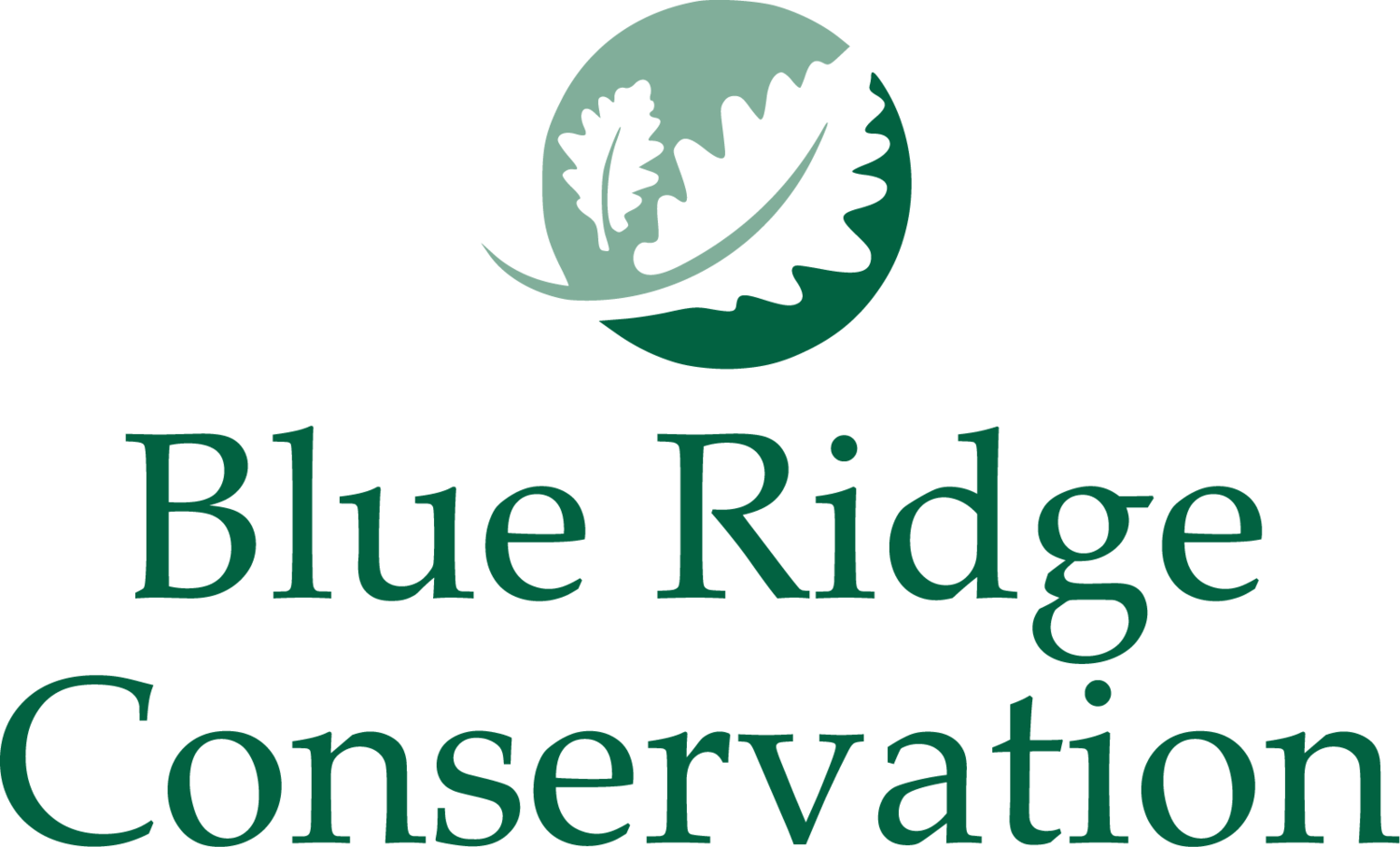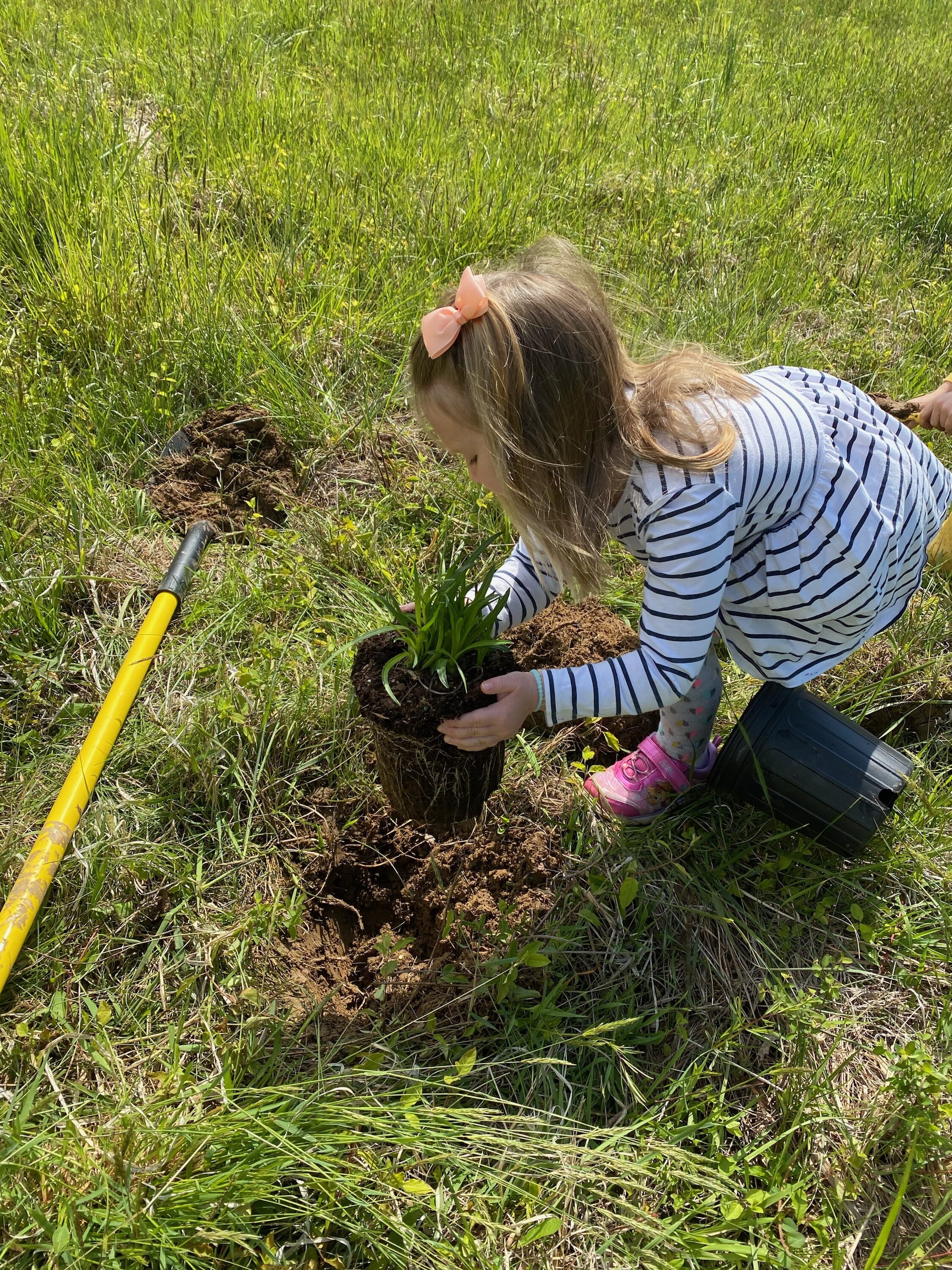
Roadside Biodiversity Initiative
Blue Ridge Conservation is committed to enhancing biodiversity in central Virginia. To do this, we launched a Roadside Biodiversity Initiative in 2019, aimed at supporting pollinators, educating the public and enhancing our local ecosystem.
It is important to understand what biodiversity is and why we want to highlight it. Biodiversity, a word created by combining biological and diversity, is the name given to the variety of all life on Earth, from bacteria to plants to people. All living things exist within their own communities, or ecosystems, such as oceans, forests, deserts, and cities. All this put together is biodiversity. Humans are intertwined in a big natural system, a web, and each element supports and enables all of us to thrive. But, biodiversity is in trouble across the globe. Ecosystems are being harmed and even eliminated. These losses can result in stress and even extinction of certain important species, such as pollinators, who are responsible to pollinating our crops so that we have fruits and vegetables, food we need to survive. Ecosystems can be fragile, so small changes can have large consequences. Humans have caused damage to the planet and biodiversity by changing land use, overusing resources, using harmful chemicals and impacting the climate. But, we can work together to make things better and BRC decided to use our local roadsides to highlight the importance of biodiversity.
Phase One
In 2019, partnering with the City of Lynchburg, BRC planted three, one-acre wildflower pollinator beds along our local highways. One at the Candler’s Mountain Road exit near the drive-thru Chick-Fil-A and two at the Grace Street exit on 29S in Greenview Park. BRC donated funds to the City of Lynchburg’s Lynchburg Expressway Appearance Fund(LEAF), which allowed for the preparation of beds (tilling, amending soil) and the planting of non-GMO wildflower seeds on the three acres of ground in the spring of 2019. It was a successful effort, providing pollinator support for the summer and fall of 2019. We have donated additional funding so that the beds can be replanted in 2020.
Phase Two
Partnering with the City of Lynchburg/LEAF and adding Crowther Landscape Architecture to the partnership several large beds will be designed and planted with non-GMO/non-Neonicotinoid native plantings that will provide continuous bloom all season, year after year. The City has chosen the location of the beds, which is on Rt. 501 North near the Graves Mill Road exit of the Lynchburg Expressway. We are taking inspiration from the New Perennial Movement, the beds will provide food and habitat to many beneficial insects and local pollinators. During the winter we will launch an educational campaign about this process through the local media. The demonstration beds will serve as a model for promoting biodiversity and we hope to promote this style of planting for all future landscape projects around our city. By boldly demonstrating this naturalistic approach to landscaping, we will educate the public about the importance of native plants and continuous habitat and provide a model that can be used statewide on highways and in residential gardens.
Phase Three
BRC partnered with McKenna Family, owner of the 2.5 acre lot on Boonsboro Rd. along with Rainfrost Nursery who generously donated native plants. The plants included: Gayfeather, Blackeyed Susans, Tickseed Moonbeam, Common Milkweed, Butterfly Weed, Rattlesnake Master, Coral Bells and Turtleheads. Blue Ridge Conservation provided over 1,000 native seed packets for planting.
Students from James River Day School, alongside several community neighbors spent two days sowing seeds and planting native plants. Some families even connected plot markers so that they can come back to the area to lend their seedlings and plants. As the students are distance learning, this project has even been incorporated into classroom science and math work.
The field already features some naturally occurring wildflowers, but it is in a highly visible location in Lynchburg, so BRC used the space to highlight the importance of maintaining a naturalized area in a city as well as the importance of providing food and habitat to our pollinators. This wildflower meadow fits into the New Perennial Movement as a form of planting that has been termed, “wildscaping.” Wildscaping is planting for the primary purpose of supporting wildlife. With a sign the field is a designated “Habitat Restoration Area” and a “No Mow Zone.”





